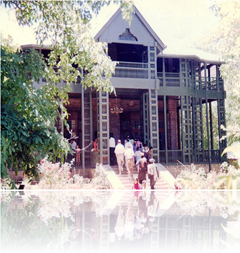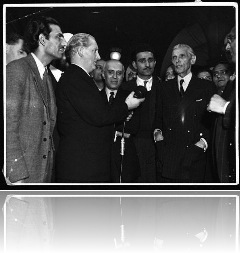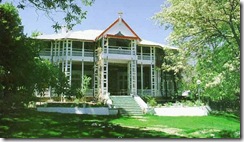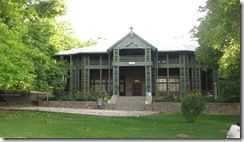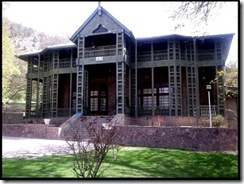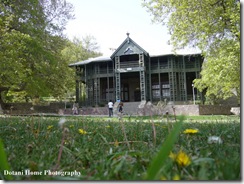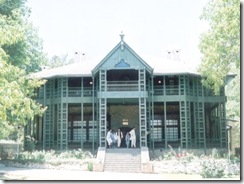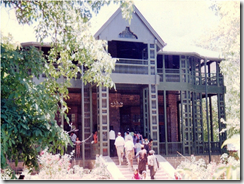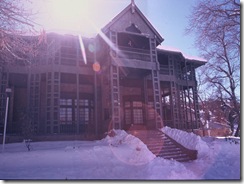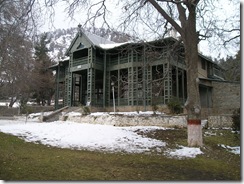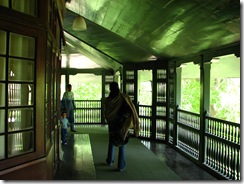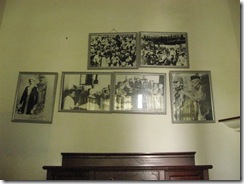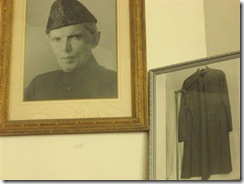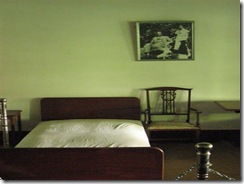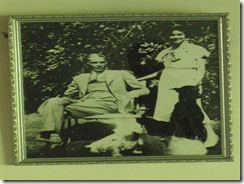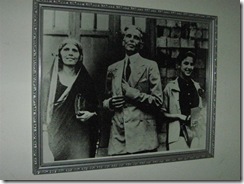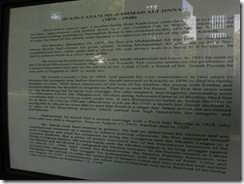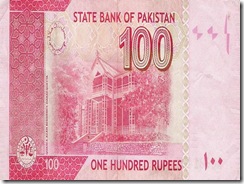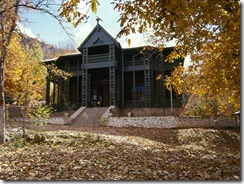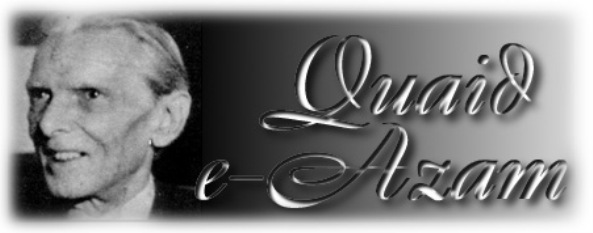By Prof Sharif al Mujahid
Quaid-i-Azam Muhammad Ali Jinnah's claim to statesmanship lay in his two attributes: (i) his rational approach towards politics, and (ii) his keeping himself in close touch with the objective ground realities, however awkward, however complex, however shifting or confusing. Little surprising, he often made the right choice at the right moment.
Prescience, idealism, intellectual vigour, faith and resolution these qualities Jinnah had in an abundant measure. Qualities that having crystallized with the years had transformed him what he finally turned out to be in the last decade of his eventful life.
His sense of realism would never fail him, with this decisions stemming from a genuine pragmatic approach. An approach, which would always take the world as it was in its changing historic realities, only to have it improved to the extent that the existing possibilities permitted, with a view to upholding the ideals of freedom and the common good. Yet underlying all of Jinnah's politics were a specific set of moral values, reflecting the intellectual traditions and sociological norms among the historical realities of Indian Islam.
Jinnah, like Konred Adenauer of West Germany, was averse to following "a purely positively utilitarian policy of expediency". This is because he was not prepared to sacrifice moral principles and spiritual necessities for temporary political gains. Nor would he allow his realism to deflect him into a policy of opportunism. For his realism had a sound ethical base, his being a policy of conviction and of conscience all the time.
Nevertheless, his overwhelming sense of pragmatism shied him away, from the futile task of abstract theorizing and enabled him to concentrate all his energies on the practical mastery of the tangible, day-to-day, political problems and tasks.
Chance, and particularly the chance of genius, says Voltaire, "is an incalculable, factor in the story of the past". "Chance because it decides which people will survive", because it determines, what names will survive the ravages of time and tide. And that he should be able to rise to any occasion is perhaps the most significant mark of greatness in a statesman. Jinnah could do something more: he could crystallise a lifetime's faith into a single bold action. And such actions over a 30-year provide the key to his political career and success.
Barely twelve years after his debut into politics for instance, Jinnah brought the divided Hindu and Muslims on one platform, a "miracle" that had never happened again.
He also got this Hindu-Muslim unity consecrated in the famous (Congress-League) Lucknow Pact of 1916. For all that it meant, it was not the handwork of a mere politician. It was an act of faith: faith in Hindu-Muslim unity as the condition of Indian freedom. And it called for utmost tact, persuasive powers, and statesmanship of the highest order to breathe a spirit of compromise, of give-and-take, into the two warring parties, so mortally suspicious of each other.
Some ten years later, he devised an extremely viable formula for a Hindu-Muslim settlement. This was in the Delhi Muslim Proposals (1927). Despite Muslim reservations about joint electorates, he offered to waive the Muslim right to separate electorates, if certain basic Muslim demands were met. These demands were: Proportional representation for Muslims in the Punjab and Bengal, the separation of Sindh from Bombay Presidency the extension of reforms to the NWFP and Balochistan and one-third Muslim representation at the center. Within the united Indian framework, the Delhi Proposal ensured the setting up of five stable Muslim Provinces to match the six Hindu ones. Hence Maulana Abul Kalaam Azad hailing them as opening. "The door for the first time to the recognition of the real rights of Muslims in India". While negating the long-standing Hindu reservations on separate electorates, the Proposals guaranteed Muslims "a proper share in the future of India".
Initially, the Congress welcomed and accepted the Proposals, Later, however, it gave in to the Hindu Mahasabhaite pressure, and opposed the Muslim demands except for the one relating to the NWFP, and for a conditional acceptance of Sindh's separation.
This mean that Jinnah's spirit of accommodation was sadly supporting on the other side. He requested that "the Muslims should be made to feel that they are secured and safeguarded against any act of oppression of the majority" fell on deaf cars. So did his plea "to rise to that statesmanship which Sir Tej Bahadur describes". But for the rejection of his impassioned pleas, the subsequent history of India would have been different. Mere politicians, out to score tactical gains let slip through their fingers the chance of a lifetime. At this juncture, the only other political leader who could match Jinnah's breadth of vision and statesmanship was Sir Tej Bahadur Sapru.
In 1937 came another chance for a Hindu-Muslim rapprochement. From 1935 onwards, Jinnah had established an entente with the Congress at the center. In February 1935, he tried to negotiate an alternative to the Communal Award (1932) with Babu Rajendra Prasad, the Congress President. A viable formula was finally worked out, but the pressure built up by the Congress Nationalist Party under Pandit Madan Mohan Malaviya, especially in Bengal and the Punjab, scuttled their efforts.
In the pre-1937 election period, despite Pandit Nehru's provocative denial of Muslim entity and identity in India's body politics on September 18, 1936, Jinnah had managed to keep him cool, offering the Congress an olive branch repeatedly. "Ours is not a hostile movement", he assured on August 20, 1936. He urged his Peshawar audience on October 19, "to unite to hammer out an advance nationalist bloc" from amongst themselves "to send to the Provincial Assembly". He exhorted Hindus and Muslims alike, at a public meeting at Nagpur's Chitnawis Park on January 1, 1937, to produce by a process of hammering fine steel and weed out those obstructing their march to freedom".
He declared on January 20, 1937 that "the urgent question facing every nationalist in India is how to create unity out of diversity and not of fight each other'.
With this end in view, he promoted the establishment of "something like a concordat" with the Congress during the 1937 elections, especially in the U.P. and Bombay. After the elections, he instructed the League Leaders to shun joining the interim ministries in these provinces. He instructed A.M.K. Dehalvi, Muslim League Assembly Party leader in Bombay, to reject out of hand Governor Brabourn's offer to head the interim ministry. Husseinally Rahimtulla and the Raja of Salempur were expelled for joining the Cooper and Chatter ministries in Bombay and the U.P. respectively.
Yet, when the Congress finally took office in July 1937, it by passed the Muslim League and Jinnah. It opted for Unitarianism a la the Nehru Report as against Muslim federalism, offered "absorption" instead of "partnership", and called for the dissolution of Muslim League parties in the legislatures for being considered for a share in power. The Congress justified the formation of exclusive one-party governments on the basis of the collective responsibility principle, but when it came to provinces such as the NWFP and Assam where it did not command an absolute majority, it flouted this principle and went in coalition ministries.
The failure of the Congress to exploit its spectacular electoral gains in 1937 for extending the areas of cooperation with the League is inexplicable unless explained in terms of it becoming "heady" with its unexpected victory and of a terrible lack of political prescience and foresight. For a plural society and for a multi-national country like India, Switzerland rather than England was the model coalition, rather than one-party government, the rule.
History shows that neglected opportunities do not, as a rule, return. However, Congress was presented the opportunity of reaching a peaceful settlement of the communal question in 1928, during 1930 (at the time of the Round Table Conference), during 1935-37 (Jinnah-Prasad Formula and the formation of provincial governments), and, finally, in 1946. But each time it failed, rather miserably. Of all these, the Cabinet Mission Plan (1946) presented the Congress leaders at this crossroad of history the chance of a lifetime, the chance perhaps of centuries. But none of them could rise to the occasion, because none of them had that "incredible clarity of vision", that "statecraft", and that "practical Bismarckian sense of the best possible" which, was Jinnah's alone, to quote the Aga Khan.
Bismarck, it is said, "was always emphatic that he could not make events". And if Jinnah had been asked about this situation at this juncture, he would have most probably said in the Bismarckian vein" "Politics are not a science based on logic; they are the capacity of always choosing at each instant, in constantly changing situations, the least harmful, the most useful". Again, like Bismarck, Jinnah, though perhaps taken by surprise by the Congress" reservations on the Cabinet Mission Plan, would turn the blunders of his enemies to his own advantage, to emerge victorious in the end.
But this anticipates. For the moment, it would suffice to note that Jinnah's crucial decision to accept the Cabinet Mission Plan demonstrated, perhaps more than anything else, this genius in statesmanship - a measure of statesmanship perhaps unmatched by the political giants involved in writing the last chapter of the British Raj in India. Hence the Aga Khans' verdict:
"In the one decision to accept the Cabinet Mission Plan, combining as it did sagacity, shrewdness, and unequalled political flair, he justified.... My claim that he was the most remarkable of all the great statesmen that I have known. In puts him on a level with Bismarck."
Remember, the Aga Khan was himself a statesman of a rare caliber, having occupied the president ship of the League of Nations.
Political genius, it is often said, lies in compromise. But this is only true within limits. An empirical approach is a distinguishing characteristic of a statesman, but that statesman alone is great who does not lose his purposive political creed in the exercise of power vested in him. The Muslim nation had, of course, authorized Jinnah to negotiate was operative only within the framework of the nation's cherished aspirations and supreme objective. The genius for compromise could never be carried beyond a recognizable point. The genius for compromise could never be carried beyond a recognizable point, the limit to compromise being set by the words of high purpose, such as Justice, Honour and Equity. In accepting the Mission Plan, Jinnah had compromised to the extent of suffering central control over the Muslim areas in respect of Defence, Foreign Affairs and Communications. But in attempting to erode the grouping provision on the one hand and envisaging and strenuously striving for a strong Centre on the other, the Congress had brazenly trespassed the limits to compromise. The Mission Plan, as formulated by its authors, ensured for Muslim Justice, Honour and Equity in the future Indian dispensation - though not in full, but in a substantial measure. The Plan, as the Congress had interpreted and proposed for implementation, had sought to cut across these high, non-compromisable principles. Jinnah had, therefore, to revoke his earlier acceptance of the Plan.
"The Future", says A.J.P. Taylor, a British historian, "is a land of which there are no maps; and historians err when they describe even the most purposeful statesman as though he were marching down a broad highroad with his objective already in sight. More flexible historians admit that a statesman has an alternative course before him; yet even they depict him as one choosing his route at crossroad. Certainly the development of history has its own logical laws. But these laws resemble rather those by which floodwater flows into hitherto unseen channels and forces itself finally to an unpredictable sea."
And if the Mission Plan had forced Indian politics through hitherto unseen channels on to an unpredictable sea, Jinnah, like Bismarck in such situations "proved himself master of the storm, a daring pilot in extremities. Like Bismarck again, even in the extremely difficult situation spawned by the British adverse verdict on the Pakistan demand, he never, even for a moment, let the initiative slip through his dexterous fingers.
Part of the wisdom of statecraft, to barrow a phrase from Richard Goodwin, is "to leave as many options open as possible and decide as little as possible... Since almost all-important judgments are speculative, you must avoid risking too much on the conviction that you are right. "The other half of the wisdom of statecraft is to "accept the chronic lubricity and obscurity of events without yielding, in Lincoln's words, firmness in the right as God gives us to see the right. Such acceptance rules out the contingency of keeping too many options open for too long, lest such keeping should paralyse the lobe of decision and end up in losing the game altogether. Thus, within the parameters of this framework, Jinnah's crucial decisions, first to accept the Mission Plan and later, when confronted with impossible congress conditions, to reject it, represent the two-halves of the wisdom of statecraft.
Jinnah's statecraft as well fulfils a test proffered by Bismarck himself: "Man cannot create the current of events. He can only float with it and steer." And the genius of Jinnah lay in his adroitly and successfully steering the adverse current of events during 1946 to bring the battered Muslim ship, safe and sound ashore within a year.
To sum up, then, Jinnah had a keep appreciation of the truth that politics is the art of the possible, that ends must conjoin and be conducive to means, that the best must be made of what is beyond one's power to change. Not only did he adroitly exploit to the full opportunities provided by his opponents. More importantly, like Mazzini, he also believed in creating opportunities through his own efforts. He had an iron will, and an unwilling faith in himself and his mission. To make these attributes the more impregnable and consequential, he was also resolute, fearless, courageous, calculating, and even somewhat reckless at time.
Yet he was farsighted, and, not withstanding the fierce invectives he had hurled oft and anon in the face of the "hated" congress, he always preferred the path of moderation and conciliation. Cautious for most part, he never took a step he could not retrace. The enabled him to stretch the hand of conciliation and compromise whenever such an opportunity presented itself. And it is a measure of the elasticity of his temper that the could change his political theosophy dewing his mid. Sixties, after over thirty years in public life, that he could accept the Mission Plan after pronouncing the "Pakistan-or- Perish" dictum, that he could call for "burying the hatchet" once the goal was achieved, that he could even preach friendship and collaboration with those to whom he was but lately so vehemently opposed. And, as in the case of Bismarck, his greatest, and perhaps most admirable, quality was to be content with limited success.
All told, it were these qualities that enabled him to surpass "possibly everyone else in India, in practical political intelligence" that earned him probably one of the highest tributes from a statesman whose stature and calibre were themselves universally recognized. In his Memoirs, the Aga Khan remarks:
Of all the statesmen that I have known in my life - Clamenceau, Lloyd George, Churchill, Curzon, Mussolini, Mahatma Gandhi - Jinnah is the most remarkable.
None of these men in my view outshone him in strength of character and in that almost uncanny combination of prescience and resolution, which is statecraft.
(The writer was founder-Director, Quaid-e-Azam Academy (1976-89), and authored "Jinnah: Studies in Interpretation (1981)", the only work to qualify for the president's Award for Best Books on Quaid-e-Azam)



